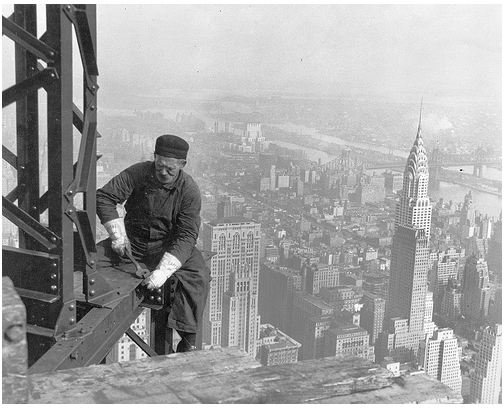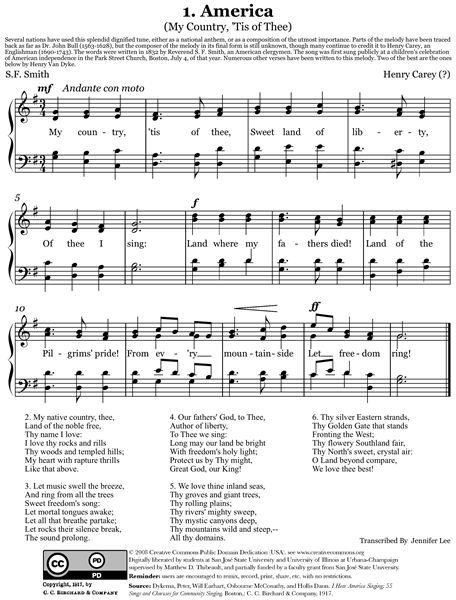Literary Analysis of Walt Whitman Poems: " I Hear America Singing," and "Beat! Beat! Drums!"
An Introduction
Before we analyze Walt Whitman’s poems, we need to take a general look at the poet and his style.
- Whitman is considered the father of free verse, although he did not invent it. Free verse is poetry without regular patterns of rhyme, rhythm or meter. Note: free verse has rhythm and meter. The pattern, however, is irregular. Rhythm is often created through the use of other poetic devices, including repetition, alliteration, and other sound devices.
- The form of Whitman’s poetry matches the content. Whitman celebrates the freedom of the individual and a celebration of freedom enjoyed in the United States. Because the attitude toward individual liberty in America was a break from European attitudes, he felt his poetry needed to break from European models as well.
- Whitman wrote about ordinary people, which isn’t altogether a break from European poets. The British Romantics celebrated the individual, for example, and they too wrote in a style which was a break from traditional forms as well.
- Whitman celebrated the body and felt that the body was a gateway to the soul.
“I Hear America Singing”
- I HEAR America singing, the varied carols I hear;
- Those of mechanics—each one singing his, as it should be, blithe and strong;
- The carpenter singing his, as he measures his plank or beam,
- The mason singing his, as he makes ready for work, or leaves off work;
- The boatman singing what belongs to him in his boat—the deckhand singing on the steamboat deck;
- The shoemaker singing as he sits on his bench—the hatter singing as he stands;
- The wood-cutter’s song—the ploughboy’s, on his way in the morning, or at the noon intermission, or at sundown;
- The delicious singing of the mother—or of the young wife at work—or of the girl sewing or washing—Each singing what belongs to her, and to none else;
- The day what belongs to the day—At night, the party of young fellows, robust, friendly,
- Singing, with open mouths, their strong melodious songs.
Analysis of “I Hear America Singing”

Now that we’ve quickly analyzed Walt Whitman, we can begin our literary analysis of Walt Whitman’s poems with an analysis of “I Hear America Singing.” Literary terms used in this peom include rhythm, synecdoche, metaphor, repetition, and imagery.
- Rhyme Scheme - There is no rhyme scheme. Whitman is the father of free verse. We just analyzed Walth Whitman’s poetry. You’ve forgotten already?
- <strong>Rhythm and Meter</strong>- There is no metrical pattern. Whitman is the father of free verse. He does use repetition, hwoever, to create rhythm.
- Synecdoche - Of all the “I Hear America Singing” literary terms, none makes its mark more strongly than synecdoche. “America” in line 1 represents individual Americans, more specifically, workers. Each line of the poem is an example of synecdoche (a special type of metaphor where the parts equal the whole or the whole equals the parts). Whitman is celebrating the greatness of America by celebrating the greatness of its individuals.
- <strong>Word Choice</strong> - “Carols” in line 1 is a connotatively charged word. It is most often associated with holy songs about Christmas. What better way to celebrate individuals and the physical body than connecting it with the physical manifestation of God himself.
- Metaphor - the sounds and actions of laborers working is compared to music. Note that all the jobs described by Whitman require physical effort.
- Repetition - The repetition of “the” in the final seven lines help create rhythm much in the same way the repetition of worker actions establishes a work rhythm.
- The democratic nature of Whitman’s poetry is reflected by his subject matter. He celebrates mechanics, carpenters, masons, mothers–the type of people usually not discussed in poems. For Whitman, it is the individual who matters and the individual freedom that allows him to be grea–“Each singing what belongs to her”–that matters.
- Theme: Whitman’s poem celebrates the individuals who make America great and the right to individual liberty that makes it possible.
If there’s anything I missed in my literary analysis of Walt Whitman’s poem , “I Hear America Singing” (and I’m sure I did), feel free to comment below.
“Beat! Beat! Drums”

-
BEAT! beat! drums!—Blow! bugles! blow!
Through the windows—through doors—burst like a ruthless force,
Into the solemn church, and scatter the congregation;
Into the school where the scholar is studying;
Leave not the bridegroom quiet—no happiness must he have now with his bride; 5
Nor the peaceful farmer any peace, plowing his field or gathering his grain;
So fierce you whirr and pound, you drums—so shrill you bugles blow.2
Beat! beat! drums!—Blow! bugles! blow!
Over the traffic of cities—over the rumble of wheels in the streets:
Are beds prepared for sleepers at night in the houses? No sleepers must sleep in those beds; 10
No bargainers’ bargains by day—no brokers or speculators—Would they continue?
Would the talkers be talking? would the singer attempt to sing?
Would the lawyer rise in the court to state his case before the judge?
Then rattle quicker, heavier drums—you bugles wilder blow.3
Beat! beat! drums!—Blow! bugles! blow! 15
Make no parley—stop for no expostulation;
Mind not the timid—mind not the weeper or prayer;
Mind not the old man beseeching the young man;
Let not the child’s voice be heard, nor the mother’s entreaties;
Make even the trestles to shake the dead, where they lie awaiting the hearses, 20
So strong you thump, O terrible drums—so loud you bugles blow.
Analysis of “Beat! Beat! Drums!”
- The most striking element of “Beat! Beat! Drums!” is its rhythm, demonstrating that free verse, when done well, carefully crafts its rhythm to imitate the sounds of life. In this instance, Whitman imitates the orderly beat of a drum and the rhythmic cadence of an army on the march. It is a difficult task, indeed, to read this poem and not picture a neatly dressed military outfit, drummers and buglers in front, on their way to create chaos.
- Speaking of chaos and order, the poem’s form and content contain these contrasting features. Much like an orderly army is more capable of inflicting disorder and destruction, so is a carefully crafted rhythm essential to the effectiveness of free verse. There is a reason Whitman is considered the father of free verse.
- Whitman champions freedom in his poetry and there’s a lot to be learned from the structure of this poem regarding freedom. It’s clear Whitman understands the tenets of traditional poetry. He has a firm grasp on rhythm and meter, yet chooses not to write as others did. Whitman could have written in any form he chose. Freedom is only present when there’s a choice. Choice is only present when there is knowledge.
- The alliteration of the b sound and the repetition of “Beat! beat! drums!–blow! bugles! blow!” imitate the sound of an army on the march and does so forcefully.
- The opening line of the poem, repeated thrice, overtakes the reader, much in the same way war overtakes “peaceful farmers,” “bargainers,” “lawyers” and others.
- Whitman uses paradox to emphasize the chaos of war: “No sleepers must sleep” (10), “No bargainers’ bargain” (11), no talkers are talking, no lawyers “rise in the court to state his case before the judge” (13). In short, war creates chaos and upsets the natural order of things.
- Whitman uses metonymy: the beating of drums and the blowing of bugles represents something with which it is closely associated, a marching army.
- He also uses synecdoche, the marching army represents military forces engaged in war; the individuals lawyers, farmers, etc. represent citizens whose lives are disrupted by war.
- Theme: war disrupts all.
This post is part of the series: The Poetry of Walt Whitman
Don’t end up on the deck cold and dead after your next poetry test. Read this study guide on Walt Whitman’s poetry instead.
